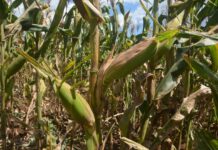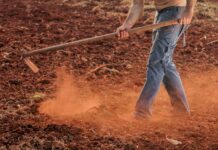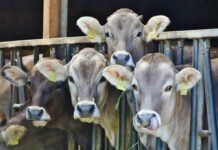
The International Livestock Research Institute (ILRI) and its partners have developed innovative communication solutions that use radio frequency broadcasting and mobile network platforms to facilitate targeted behavioural change among livestock producers in Ethiopia.
This groundbreaking initiative aims to help farmers adopt climate‑smart agricultural practices, in particular improved forage feeding systems, in regions where traditional extension services face limitations.
Across a three‑year project in the Amhara, Sidama and Central Ethiopia regions, more than 91,000 farmers have accessed tailored information on the production and use of climate‑smart forage innovations. This digital‑first approach has proved essential in bridging knowledge gaps in remote and underserved communities.
A baseline survey involving 360 farmers revealed deep-seated barriers: 98 % relied primarily on crop residues rather than cultivated forages, only 33 % had tried growing forages, and nearly 65 % hesitated to allocate more than a quarter of their land to forage due to fears of reducing crop production. Cultural attitudes further hampered adoption: forages were often seen as mere “grass,” and selling forage carried stigma, while gender norms limited women’s roles in livestock markets.
To help overcome these constraints, ILRI teamed up with three regional radio stations—Debre Birhan Fana FM, Hossana FM and Shashemene Fana FM—as well as Ethio Telecom. The multimedia package includes:
- Weekly radio programmes: 39 episodes of 20 minutes each covering forage varieties, storage methods and climate resilience.
- Mobile voice messages: Nearly 48,000 one-minute audio tips in local languages (Amharic, Hadiyisa and Sidama), listened to by over 29,000 farmers.
- Journalist training workshops: Equipping regional media professionals with livestock feeding and forage expertise to enhance journalistic outreach and accuracy.
At project endline—based on surveys with 355 farmers—radio and mobile messages emerged among the top three trusted sources of information alongside traditional extension agents. Mobile voice tips achieved a 61 % listen‑through rate, signalling strong engagement. Farmers reported increasing interest in drought‑tolerant forages such as alfalfa and legume intercropping. Extension officers described ripple effects: farmers from non‑project areas began calling for advice, and early adopters became local mentors by sharing techniques with neighbours.
Despite strong results, the initiative highlighted that mass communication alone cannot meet all adoption challenges. Complementary field days, and training for farmers, seed suppliers and extension staff were essential to overcome systemic hurdles in seed supply and technical knowledge.







